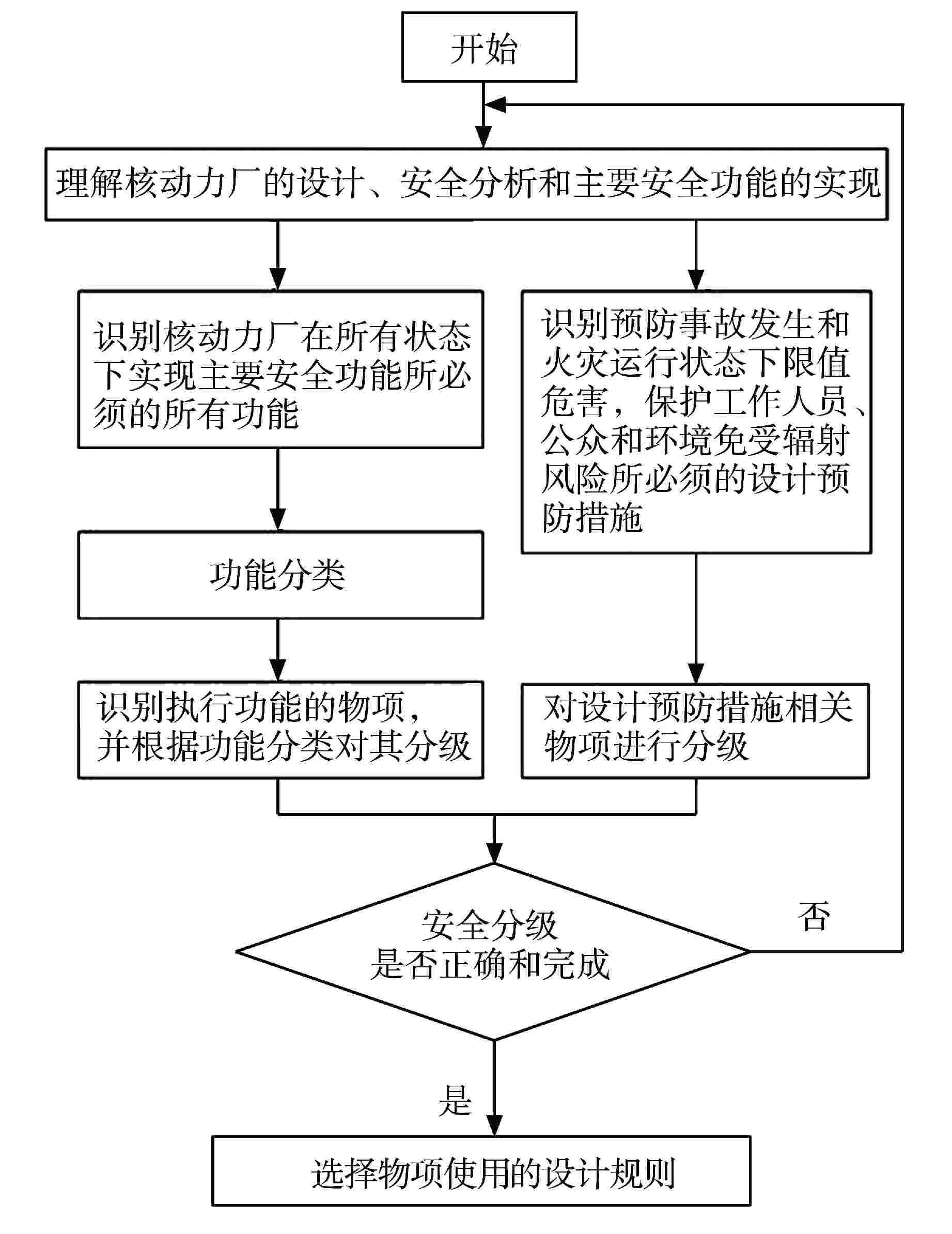Study on Dose Criteria in Safety Classification of Nuclear Power Plant Items
-
摘要: 核动力厂的设计中通过对物项进行安全分级,来确保物项的设计、制造、建造等满足适当的要求,达到与其执行的功能相符的可靠性。本文简要介绍了根据安全重要性对核动力厂物项进行安全分级的方法以及应考虑的因素。针对物项安全分级中应考虑的未能执行某一安全功能的后果,使用核动力厂不同工况下对公众和工作人员的剂量准则来划分“高、中、低”后果。通过研究提出放射性“高、中、低”后果定量化的建议,以使得该方法在用于核动力厂物项安全分级时更具有可操作性。Abstract: In the design of nuclear power plant, the safety classification of items is carried out to ensure that the design, manufacturing and construction of the items meet appropriate requirements and that the reliability consistent with their functions can be achieved. This paper briefly describes the method of safety classification of nuclear power plant items according to safety importance and the factors that should be considered. For the consequences of failing to perform a safety function that should be considered in the safety classification of the items, the dose criteria for the public and staff under different working conditions of nuclear power plant are used to divide them into high, medium and low consequences. Through the study, some suggestions on the quantification of high, medium and low radioactive consequences are put forward so as to make this method more operable in the safety classification of nuclear power plant items.
-
Key words:
- Nuclear power plant items /
- Safety classification /
- Radioactive consequences /
- Dose limit
-
表 1 不同工况下的功能分类
Table 1. Function Classification under Different Conditions
工况 安全功能失效后果严重程度 高 中 低 AOO可控状态前 FC1 FC2 FC3 DBA可控状态前 FC1 FC2 FC3 AOO和DBA达到和维持安全状态 FC2 FC3 FC3 DEC FC2或FC3 NC NC AOO—预计运行事件;DBA—设计基准事故;DEC—设计扩展工况 表 2 不同核动力厂状态下的验收准则
Table 2. Acceptance Criteria in Different States of Nuclear Power Plant
核动力厂状态 维持屏障完整性的验收准则 放射性后果限值的验收准则 正常运行 除了较小的运行泄漏外,实体屏障无任何故障 对厂区邻近区域的放射性影响可忽略。可接受的有效剂量限值可被对公众通用的辐射防护限值包络(与天然本底1 mSv/a相当),典型的限值为0.1 mSv/a AOO 除了较小的运行泄漏外,实体屏障无任何故障 对厂区邻近区域的放射性影响可忽略。可接受的有效剂量限值与正常运行工况相似,限制每个事件和事件后1 a内的影响(0.1 mSv/a) DBA 反应堆冷却剂系统无相关损坏;安全壳完整;有限的燃料元件破损 对厂区邻近区域没有或仅有极少放射性影响,无需采取任何场外应急行动。通常可接受的有效剂量限值为几个mSv 表 3 ANS 51.1的核动力厂状态分类和准则
Table 3. Classification and Criteria of Nuclear Power Plant States in ANS 51.1
核动力厂状态 对应的最佳估算发生频率
F/(堆·a)−1场外放射性剂量限值 PC-1 正常运行状态 10 CFR Part 50 附录Ⅰ PC-2 F≥10−1 10 CFR Part 50 附录Ⅰ PC-3 10−1≥F≥10−2 10% 10 CFR Part 100 PC-4 10−2≥F≥10−4 25% 10 CFR Part 100 PC-5 10−4≥F≥10−6 100% 10 CFR Part 100 -
[1] IAEA. Safety classification of structures, systems and components in nuclear power plants: No. SSG-30[R]. Vienna: International Atomic Energy Agency, 2014. [2] IAEA. Considerations on the application of the IAEA safety requirements for the design of nuclear power plants: IAEA-TECDOC-1791[R]. Vienna: International Atomic Energy Agency, 2016. [3] 环境保护部, 中华人民共和国国家质量监督检验检疫总局. 核动力厂环境辐射防护规定: GB 6249—2011[S]. 北京: 中国标准出版社, 2011. [4] 国家核安全局. 核动力厂设计安全规定: HAF 102—2016[S]. 北京: 中国标准出版社, 2016. [5] IAEA. IAEA safety glossary: terminology used in nuclear safety and radiation protection, 2018 edition[Z]. Vienna: International Atomic Energy Agency, 2019. [6] NRC. Standards for protection against radiation:10 CFR Part 50[S]. USA: Nuclear Regulatory Commission, 1991. [7] NRC. Introduction - transient and accident analysis: NUREG-0800[R]. USA: Nuclear Regulatory Commission, 2007. [8] American Nuclear Society. Nuclear safety criteria for the design of stationary pressurized water reactor plants: ANS-51[S]. USA: ANS, 1983. [9] NRC. Standards for protection against radiation: 10 CFR Part 100[S]. USA: Nuclear Regulatory Commission, 2011. [10] 中华人民共和国国家质量监督检验检疫总局. 电离辐射防护与辐射源安全基本标准: GB 18871—2002[S]. 北京: 中国标准出版社, 2004. -






 下载:
下载:



